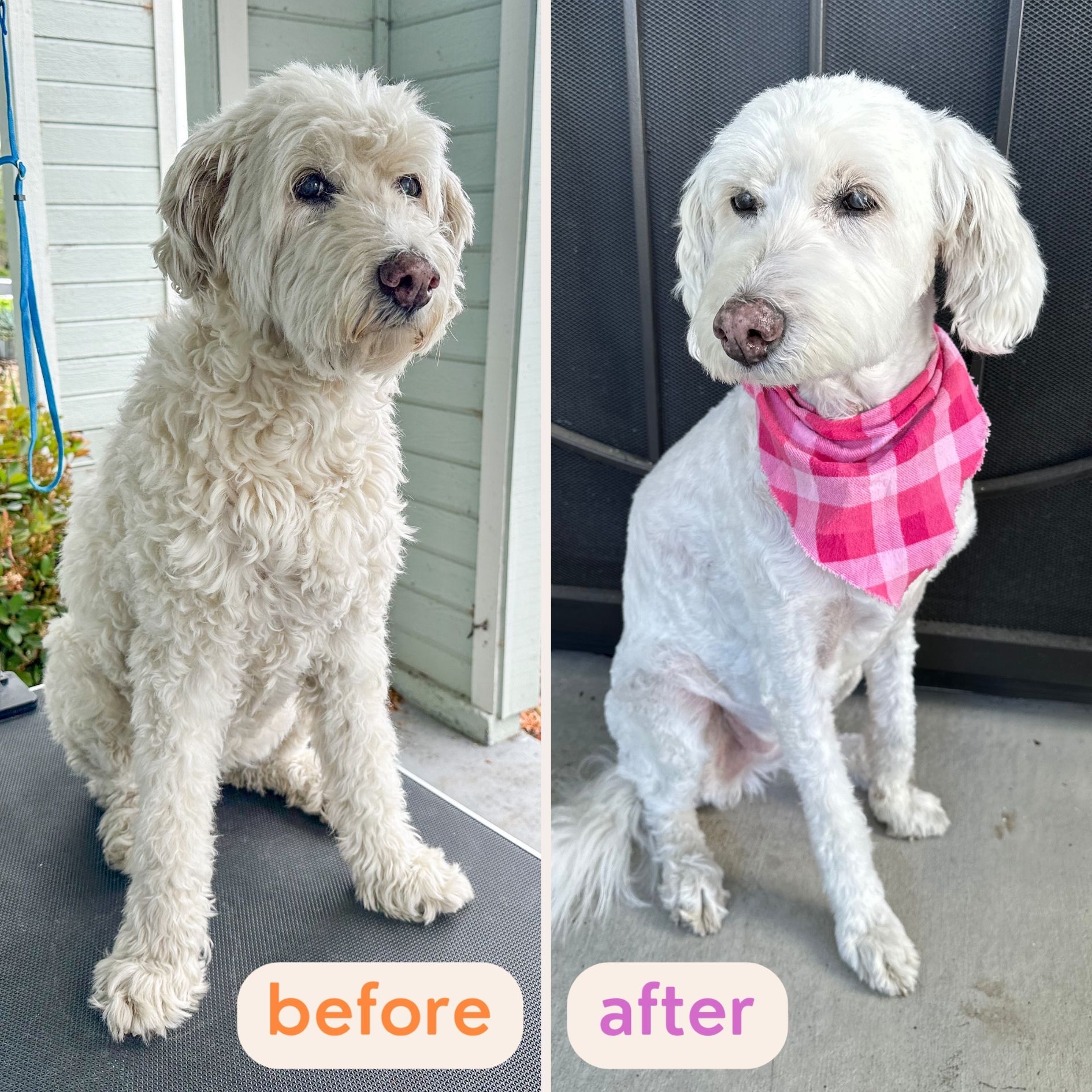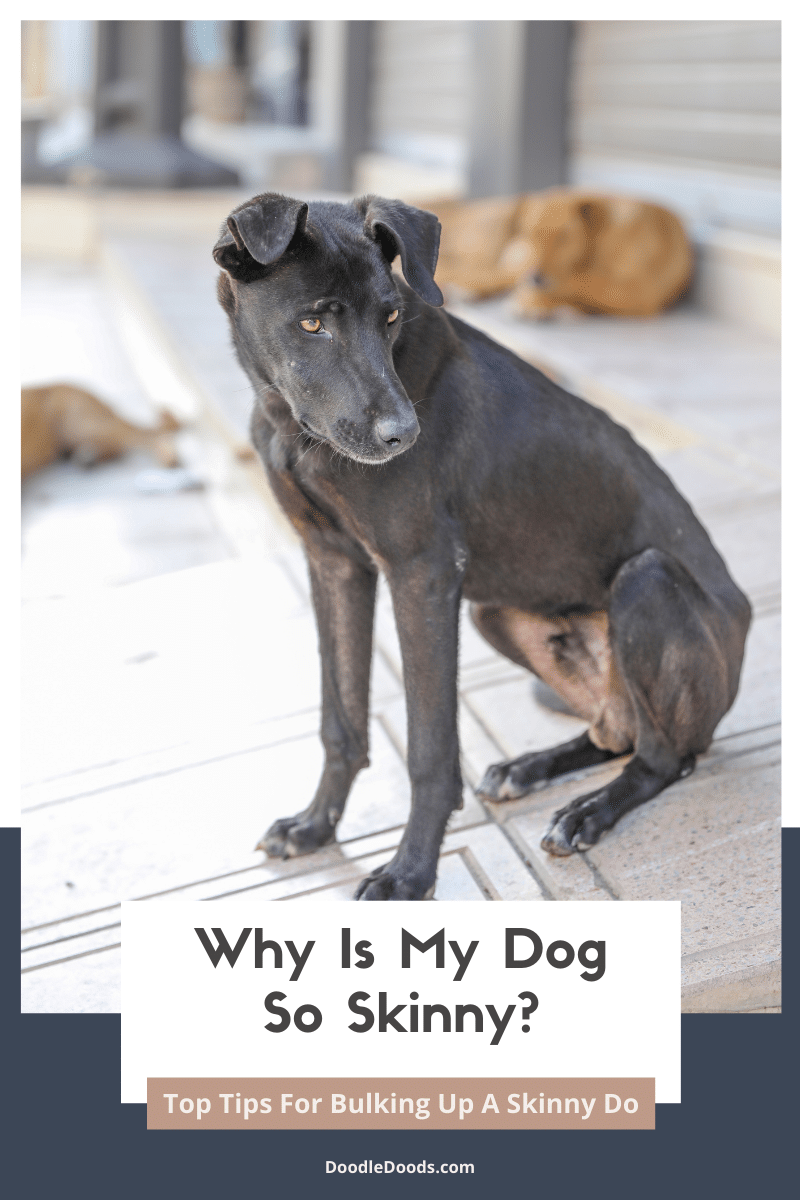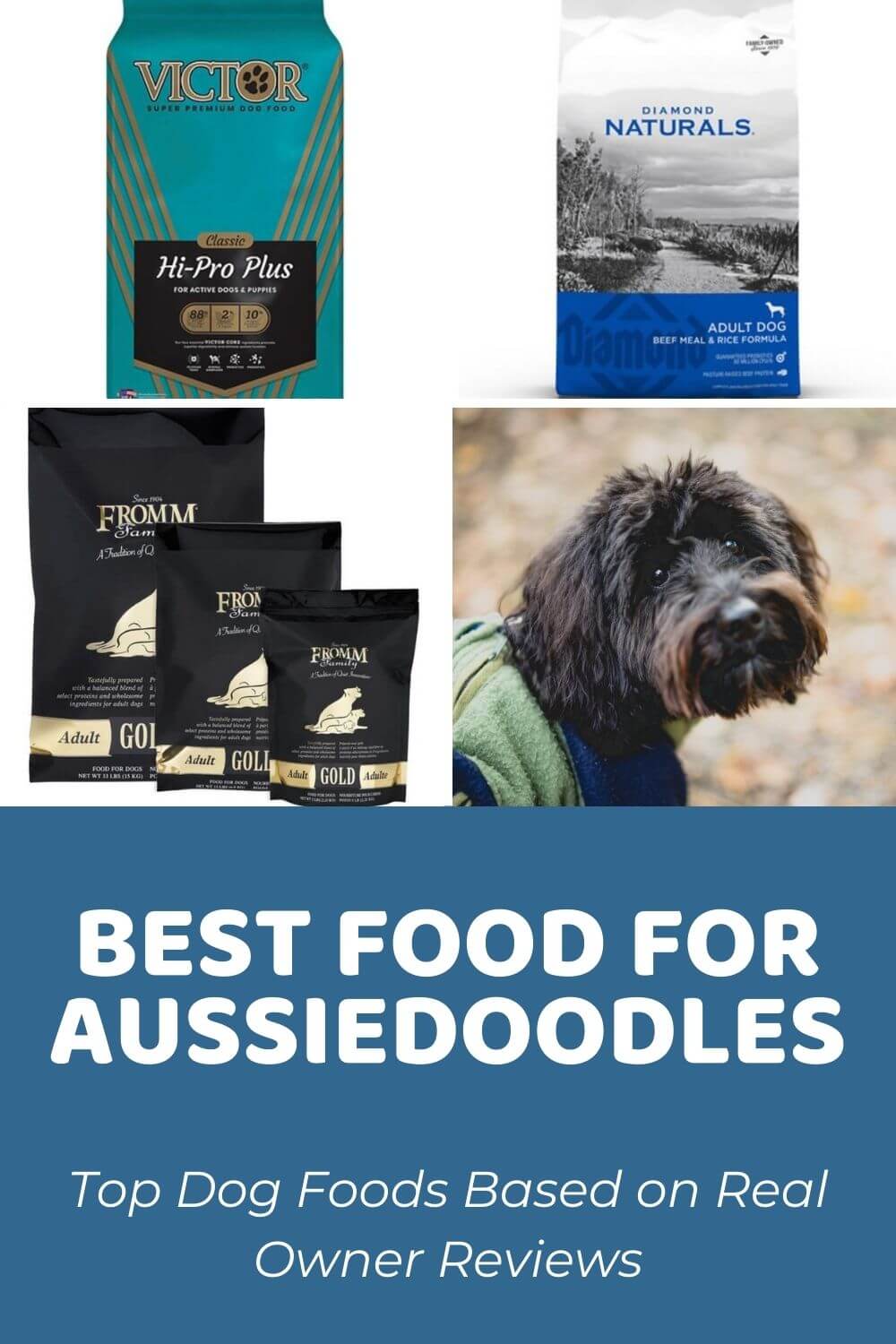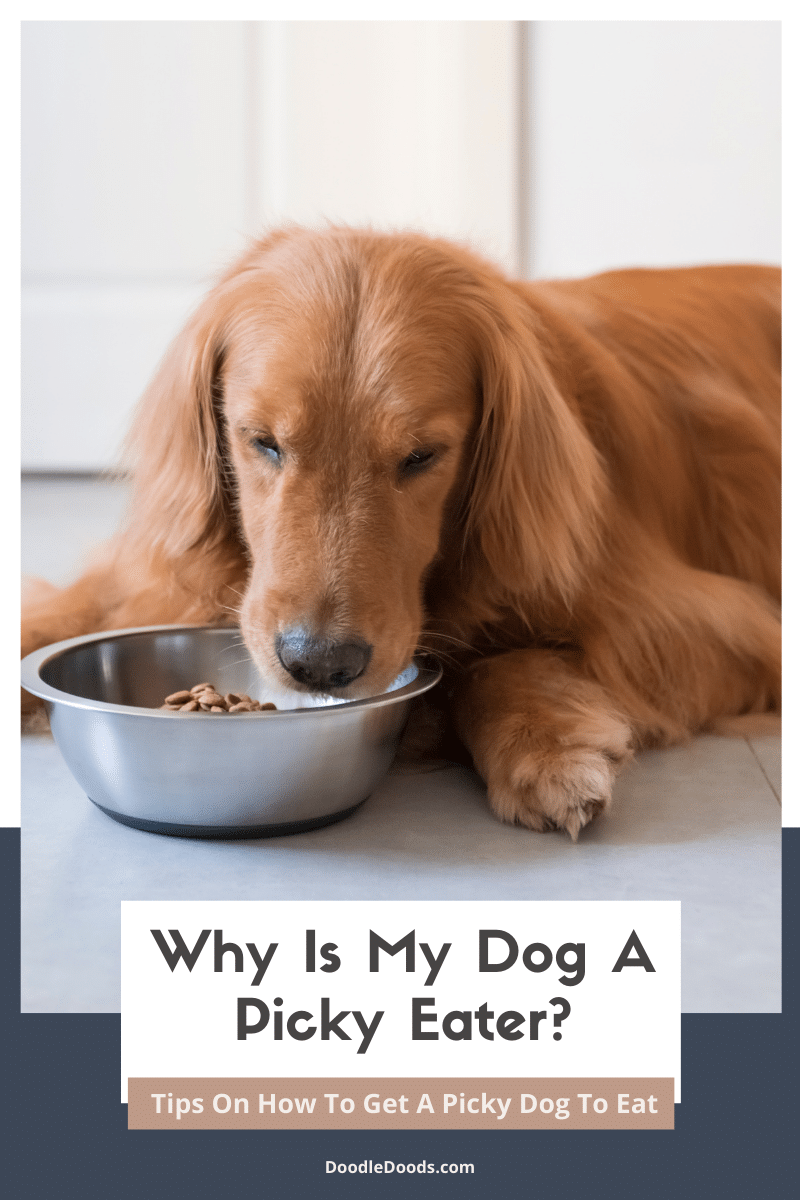My dog is too skinny! What should I do? Is there a reason for it? Should I be worried? Or is it completely normal? All of those questions are bound to pop in your head when you’re struggling to make sense of your dog’s weight. And good for you – as a dog owner, you SHOULD be careful and cautious, keeping a close eye on your dog’s body, health, and wellbeing, so that you can ensure that you’re noticing any worrying signs early on. In this guide, we’ll talk about how and when you should be worried about your dog being too skinny, including some of the common causes and how to help your dog weight in a natural and healthy way. Let’s get into it.
Table of Contents
- My Dog Is Too Skinny: Introduction
- Is My Dog Too Skinny?
- How To Check If My Dog Is Underweight Or Overweight?
- Why Is My Dog Skinny?
- Top 3 Ways To Help Your Dog Gain Weight Naturally
- My Dog Is Too Skinny: FAQs
- My Dog Is Too Skinny: Final Thoughts
My Dog Is Too Skinny: Introduction
Whether your pup doesn’t have the biggest appetite in the world, has always been on the leaner side, or perhaps started to lose weight in the last few weeks, you might be worried and asking yourself – is my dog too skinny? And why is my dog so skinny?
In some cases, it could be due to completely harmless reasons, such as your pup naturally being on the thinner side. In fact, there can be significant differences between dog breeds. Some are naturally very lean and athletic, whereas others have a more muscular, stocky build. Then there are also some dogs that are more prone to obesity due to improper lifestyle and diet. As with humans, it all depends on a variety of factors which can be difficult to pinpoint at first. Genetics and environment can play a huge role here.
But other times, your dog being too skinny could also indicate that there’s either an underlying health issue that you should deal with immediately. Also, maybe they’re not getting the right kind of nutrition or there’s something else lacking in their lifestyle.
Whatever the cause, in this article we’re going to dive deeper into this topic so that you can figure out whether or not you should be worried about your skinny dog being a bit too thin.
Is My Dog Too Skinny?
The first things we must understand before answering your question “is my dog too skinny?” is your dog’s background, especially their breed.
If you’ve got an otherwise healthy, but skinny dog, it could actually be totally normal. Keep in mind that different dog breeds have naturally different body types as well. Breeds like Greyhound, Dobermann Pinscher, or Afghan Hound are known to be quite slim and thin naturally. On the other hand, dogs like the Chow Chow, Labrador Retriever, and Pug are more on the chubbier side with their stocky builds.
In addition to that, sometimes our perception of what’s a healthy weight on a dog can be a bit skewed. Obesity isn’t just an ever growing issue in the human population. Many dogs actually are also overweight or even obese. This in turn can lead to a host of other health conditions. To be more precise, it’s thought that about 50% of dogs in the US and UK are overweight or obese.
In fact, obesity and excess weight in dogs can contribute to joint problems, especially in older age, as well as heart problems, diabetes, kidney and liver disease, various forms of cancer. Furthermore, obese dogs have a generally lower life expectancy and reduced quality of life. (Source)
But while excess body weight and obesity are certainly harmful for our pets, it’s not exactly healthy for a dog to be too skinny, either. Besides the normal differences between breeds, some dogs can be too skinny and therefore develop various ailments that can severely harm their health.
For instance, if your dog is malnourished, they’re not getting enough micro and macronutrients from their diet, or their body is simply not able to absorb nutrients from the food. This can weaken your dog’s immune system, cause issues with their bone density and muscle function, or lead to heart conditions, digestive issues, neurological problems, and issues with coordination.
How To Check If My Dog Is Underweight Or Overweight?
I think my dog is too skinny. Is there a way to check whether they’re at a healthy weight or too thin?
If you’re worried about your skinny dog being unhealthily thin, there’s a simple way to check whether or not you should be worried. While humans can use the BMI calculator to assess their weight and height ratio in relation to health, for dogs there’s been developed a system called Canine Body Condition Score, also known as BCS.
The Body Condition Score scale is evaluated on a 9 point scale. Dogs that score on 4-5 points are considered at a healthy, ideal weight. Dogs scoring 6-7 points are considered overweight, and at 8-9 points already obese. Meanwhile, if your dog is in the 1-3 point range, they are considered too thin, number one being dangerously skinny.

How To Check Your Dog’s Body Condition Score
To evaluate your dog’s Body Condition Score, you should check their ribs, shoulder bones, hips, spine, tailbone, abdomen, and waistline. A dog at a healthy weight should have ribs that you can easily feel, with a little bit of fat covering them. If you can see the ribs on your dog at all times and can feel only skin on the ribs with no soft tissue, your dog might be too skinny.
You should also feel the base of your dog’s tailbone. If you can feel the bones very easily with no soft tissue covering them, or if they’re protruding, it’s another sign that your dog is too skinny. The same goes for shoulder bones, spine, and hip bones.
A helpful tip to understand how you should actually feel your dog’s bones is to first get the hang of it with your knuckles. If you lay your hand flat on a surface, your knuckles will not be protruding and have a small amount of soft tissue covering them. But if you clench your hand in a closed fist, the knuckles will start to protrude. That’s the feeling you can go by when assessing your dog’s weight as well.
You should also assess your dog from overhead view and side view. When looking at your dog from above, pay attention to the waistline in correlation to the ribs and hip bones. If the waistline is severely tucked in and very pronounced, your dog could be too skinny. Likewise, if on the side the abdomen looks very tucked in and the shoulder and hip bones are visible, they might be too thin.
In contrast, an overweight dog will have a thicker fat layer covering all of those areas. In more severe cases, it can be near impossible to locate the ribs, tailbone, and shoulders. Not just when feeling the different areas with your hands, but also when looking at them from overhead view and on the side. Obese dogs won’t have a visible waistline and their abdomen will also be hanging off when looking from the side.
Veterinarians use the Body Condition Score to evaluate pets’ healthy weight range. So if you’re not too sure about your own assessment skills, don’t hesitate to contact your vet about this issue.
Why Is My Dog Skinny?
Now onto the big question – why is my dog skinny? Below we’ll cover some of the most common causes of low body weight in dogs.
Your Dog Is A Picky Eater
Interestingly enough, some dogs can be picky eaters. While many dogs eat pretty much anything and everything they can get their paws on, some dogs are the exact opposite. Most dogs tend to inhale their bowl of kibble as quickly as possible. These pets are just so food motivated! But some dogs actually are quite picky. They usually don’t enjoy as many flavors, textures, or aromas in their kibble or wet food.
Your pup may have a preference in flavors. Some dogs love chicken, whereas others prefer beef better. Or perhaps your dog is more of a fish fan or enjoys some other more exotic type of protein. The same goes for other ingredients in their food.
In addition to that, you dog might be fussy about the texture of their kibble or canned food. Perhaps the chunks in their wet food are too big or too small? Or maybe their kibble is too chewy or too hard?
In some cases, your dog might have negative associations with certain flavors or aromas. This usually happens when a dog has gotten ill whilst eating a certain formula in the past. All of these little details can put a picky dog off their otherwise healthy and nutritionally balanced diet.
There’s An Underlying Medical Issue
If your dog has suddenly become too skinny, it’s definitely a reason to worry. Some illnesses cause your dog to lose weight even without losing their appetite. Meanwhile, other medical conditions will also lead to loss of appetite. Either way, if you suspect that your dog is too skinny due to a health problem, it’s absolutely vital that you contact your vet as soon as possible. The sooner you get your pup to the vet for assessment and diagnosis, the better.
One of the most common causes of weight loss in dogs are intestinal parasites. Intestinal parasites can cause loss of appetite and also affect your dog’s energy levels. However, in some cases your dog might have the same usual appetite, but their body won’t be able to absorb the nutrients from the food. Essentially, intestinal parasites feed on all of those nutrients themselves, causing your pup to become malnourished. Fortunately, worms and parasites can be easily prevented with a proper deworming regimen recommended by your vet.
By the way, some dogs are also at a higher risk of allergies and food intolerances. With certain types of food allergies and intolerances, your dog may experience nausea, vomiting, and diarrhea. All of which can greatly reduce your dog’s appetite, making them lose weight in the process. Other digestive problems like inflammatory bowel disease, a.k.a IBS can also contribute to weight loss.
Unfortunately, if your dog is suddenly becoming too thin, it could also hint at a more serious health condition. Medical issues like dental diseases, diabetes, kidney and liver disease, heart disease, hormonal diseases, or even cancer can all lead to weight loss in dogs.
Your Dog Is Suffering From Stress Or Anxiety
Your dog’s mental and emotional wellbeing is just as important as their physical health. Like humans, dogs can experience a range of emotions and they may also suffer from stress and anxiety. If your dog is stressed out for an extended period of time, they might lose their appetite and as a result start losing weight.
Separation anxiety could be to blame, especially if you’ve noticed your dog becoming visibly upset every time you leave the house. There was a huge influx or separation anxiety after the COVID-19 restrictions were lifted and everyone was allowed back into offices, leaving behind the already familiar routine of spending days in home offices with pets by our sides.
In addition to that, changes in your dog’s daily routine, divorce or death in the family, moving houses, renovations, or even welcoming a new baby or pet to your family can all cause stress and anxiety in some dogs.
You’re Not Exercising Your Pup Enough
Daily exercise is undeniably a great way to prevent and treat obesity. It’s also excellent for supporting healthy muscle tone and good joint health. Although it might seem contradictory, not exercising your dog enough on a daily basis can actually reduce their appetite to the point that they’re losing weight.
Regular exercise actually stimulates a healthy appetite. As you can imagine, if your dog is lounging around the whole day and doesn’t do almost any exercise, whether it’s walking, running, or playing fetch, they likely won’t burn much energy, either. As a result, they will be eating less and less, often becoming quite a picky eater. And then, they’ll start losing weight and becoming thinner over time.
On that note, you should also make sure to mentally stimulate your pooch with fun activities like chew toys, training sessions, puzzle toys, and interactive games. A tired pup is a happy pup and you want to prevent boredom as much as possible. It’s not all that uncommon for a constantly bored dog to also become anxious and stressed.
Age Related Changes In Eating Habits And Energy Levels
Elderly dogs may either gain or lose weight as they become older. It’s not uncommon for a senior dog to experience a reduced appetite. Elderly dogs often also suffer from age-related health conditions that could lead to weight loss. Additionally, they may lose muscle mass due to lower energy levels and exercising less.
While some senior dogs gain weight and become chubbier due to exercising less, others may lose weight and become thinner. Older dogs also are at higher risk of joint and muscle problems so that their muscles start becoming weaker and wasting away. This in turn can lead to weight loss and an overall skinnier appearance.
Once your dog enters its golden years, it’s usually recommended to switch their usual adult food formula to one that’s specially formulated for senior dogs. You should also consult with your vet about the appropriate steps according to your pup’s age. They might be able to recommend supplements like omega-3 fatty acids and joint supporting supplements with glucosamine and chondroitin.
You’re Underfeeding Your Dog
Feeding the right amount of food to your dog is important to prevent obesity as well as becoming underweight and malnourished. Underfeeding your dog can be equally as dangerous as overfeeding them. The amount of food you should feed your dog depends on their breed, size, age, weight, and activity levels. We recommend checking the label on your dog food packaging, mainly the caloric content, and then calculate how much you should feed your dog with the help of our dog food calculator.
What’s more, it’s equally important to feed your dog the right kind of food. Look for dry kibbles and wet formulas, whichever you and your pup prefer more, that meets or exceeds the AAFCO standards for pet food (if you’re in the US). Your dog’s food should be nutritionally balanced. This means that the food should provide your pup with all the nutrients they need in the right quantities. We also recommend you steer clear from formulas that contain unnecessary fillers, colorings, flavors, or artificial preservatives.
Top 3 Ways To Help Your Dog Gain Weight Naturally
If by now you’re sure that your skinny dog is underweight, not just naturally slim, it might be reasonable to look into ways to help your dog gain weight in a healthy way. But before you start, we strongly recommend you consult this with your vet first. Your dog’s veterinarian will be able to rule out any potential medical emergencies as well as recommend the best therapies that will suit your pup’s unique needs.
Increase The Meal Frequency
My dog is too skinny. Should I start feeding them more, then?
Yes and no. The best course of action would be to increase the meal frequency instead of just mindlessly feeding your dog more food. If so far your dog has been eating two meals per day, you can try increasing their meals to three per day. This can also be helpful with picky eaters and dogs who won’t finish their whole meal in one sitting.
In case you’ve already been measuring out your dog’s meal portions and they never finish their meals, splitting them up into three instead of two meals could potentially help. However, if you’ve been unknowingly or accidentally underfeeding your dog, make sure that you start measuring their meals so that they get all the calories and nutrients they need from their food.
We usually advise against free feeding dogs, as it can be difficult to keep an eye on their actual food intake throughout the day. That’s why we always recommend measuring out your dog’s exact meal portions. This way, you have a proper overview of how much food they eat and whether or not they’re getting enough calories from their daily diet.
Add High-Calorie Foods In His Diet
Another option is to start feeding your dog a high-calorie dog food formula. While feeding your dog their same usual kibble in larger quantities might be helpful in some cases, your vet might actually recommend switching to a high-calorie dog food instead. If you’ve got a picky eater who isn’t motivated by food and doesn’t enjoy eating large volumes in one sitting, a high-calorie formula might be a better idea. Again, be sure to consult with your vet to find the best solution for your dog.
Keep in mind that dog food labels usually don’t state explicitly that it’s a high-calorie formula. So you’ll have to look at the nutritional profile and calorie content on the label to ensure it’s a high-calorie food. In this guide, you’ll find some of the best high-calorie dog food formulas. We have both dry kibbles and wet food formulas lined up in that article.
Moreover, some people find switching out their dog’s usual protein source for another one. This can be very helpful for picky eaters or if your pooch just cannot stand certain ingredients in their kibble.
Exercise Your Dog To Stimulate Appetite
If your dog’s low appetite and thin appearance is caused by low exercise, then the simple solution is to exercise them more. Take them out for daily walks, preferably at least twice a day. You should also schedule in some playtime with toys and in your backyard or local dog park. If you’re unsure how much exercise your dog needs, there are plenty of resources online about the usual exercise recommendations for different breeds.
The other side of the coin is that if your already skinny dog starts to exercise more vigorously each day, they may start to lose weight even faster if they’re not getting sufficient nutrition to offset it. For more active dogs, high-calorie formulas (sometimes labeled as formulas for active dogs) can be a great way to support their muscles and healthy weight gain.
My Dog Is Too Skinny: FAQs
If your dog has always been skinny, has no medical conditions, and generally has a good appetite, it could simply be due to their breed and naturally slim build. However, if your skinny dog eats much, but doesn’t seem to gain weight or even loses more weight, it can very possibly be due to a health condition. For instance, intestinal parasites, kidney disease, liver disease, dental problems, hormonal diseases, diabetes, cancer, and IBS are just some of the conditions that could make your dog lose weight, even if they’re seemingly not losing their appetite.
The general recommendation for adult dogs is to feed them twice a day. The frequency of your dog’s meals should change once they start nearing adulthood. Before weaning, puppies should have access to mother’s milk (or puppy milk formula) at all times, as they’re still growing and developing their immune systems. From around 8 to 12 weeks of age, by which most puppies are fully weaned, you can start feeding a puppy about 3 to 4 times a day. By the time your pup is around 4 to 5 months old, you can start feeding them 3 meals per day. At around 6 to 8 months of age is usually a good time to graduate a puppy to 2 mealtimes each day.
Yes, parasite infestations can make your dog skinny. That’s because worms can lead to malnourishment so that your dog isn’t getting enough nutrients from their food anymore. In addition to that, worms can also lead to diarrhea, vomiting, dehydration, and loss of appetite, all of which can make your dog lose weight.
My Dog Is Too Skinny: Final Thoughts
While about half the dogs in the US and UK are overweight or obese, other concerned pet owners often ask “why is my dog too skinny?”. Being underweight or overweight isn’t ideal for any dog. However, finding the right balance and getting your pooch into the most ideal, healthiest weight can also prove to be a challenge. We hope this article has managed to shed some light onto this topic so that you can start taking appropriate steps to help your pup gain weight in a healthy and optimal way.
Want to Learn
DIY Doodle Grooming?

 “Every concern and question I had now has clear, practical solutions.” – Paula D.
“Every concern and question I had now has clear, practical solutions.” – Paula D.
 “These lessons have provided tremendous amounts of information.” – Steve B.
“These lessons have provided tremendous amounts of information.” – Steve B.
 “Buy the course and complain about how easy it is!” – Chris S.
“Buy the course and complain about how easy it is!” – Chris S.
Learn How To Groom Your Doodle At Home…
Safely…And Without Confusion:









